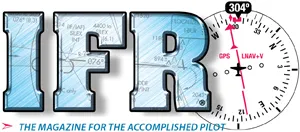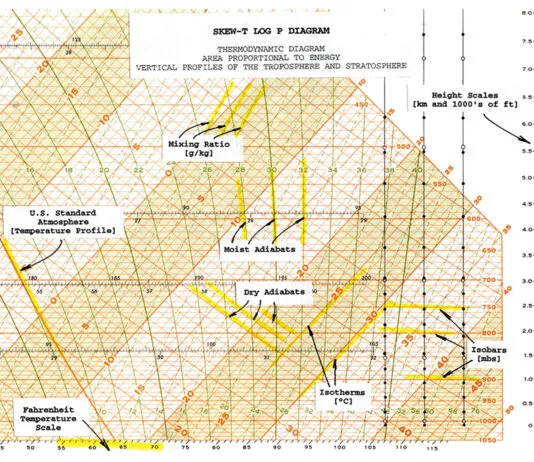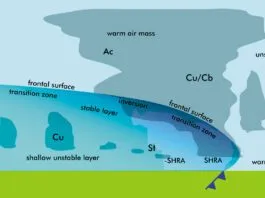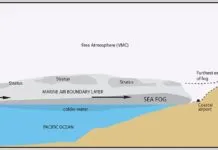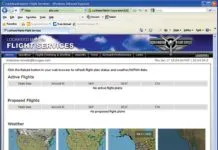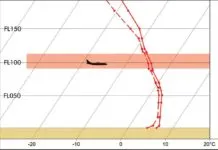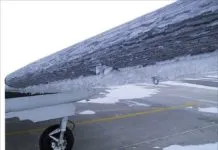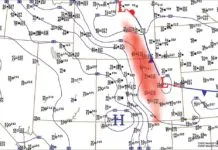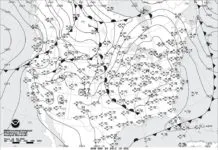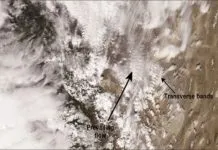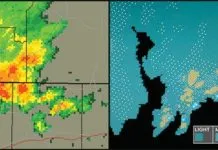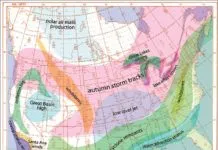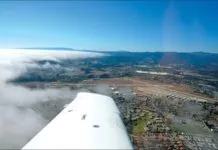West Coast Fog Monster
Fog along the West Coast of the United States has been documented as far back as the arrival of the Spaniards in the 16th...
Spring Dust Storms
In March, 1933, Malcolm C. Harrison wrote in An Unusual Texas Duststorm, "Pilots were experiencing the same condition over North and Central Texas, all...
One Stop Web Weather?
At the AOPA Summit in October 2012 Lockheed Martin had a large and impressive display to announce the rollout of Flight Services (LMFS). Sigh…another...
Meteorology of Icing
Icing is one of the most feared hazards of flight. In the extreme, the aircraft becomes enshrouded in a thick, solid mass that reduces lift and thrust as the twin effects of drag and gravity overcome our ability to maintain controlled flight. Not only is the shape of our airfoils changed, but ice accumulation dramatically increases drag, clogs pitot tubes, jams control surfaces, blocks undercarriage doors, obstructs engine intakes, and the final insult, covers the windshield. We may not even be aware of how extensive the ice is until a high angle of attack or unusual power settings are required. At this point premature and significant aging may instantly occur within the cockpit.
Knowing Known Ice
Transitioning to your first aircraft that has ice protection equipment beyond a heated pitot tube is a big step for a pilot. Having a full complement of ice protection usually gives pilots warm fuzzy feelings about being able to complete more trips and handle any ice related problems that arise. Unfortunately, the current regulations and guidance addressing icing can be just as complex as dealing with the nuances of in-flight icing encounters.
Chinook Winds
In 1892, E.B. Garriott wrote for the fledgling U.S. Weather Bureau, Following a period of intense cold the Chinook wind is a welcome visitor in the Northwest. The icy clutch of winter is loosened. The earth throws off its winding sheet of snow. Humanity ventures forth to inhale the balmy, spring-like air. Animate nature rejoices.
IFR Under Pressure
We're not talking about the anxiety of a slam-dunk vector. The subtleties of the mundane altimeter setting really matter—especially for IFR in the high...
Staying In One Piece
With sunny skies and calm winds, it's a surprise to reach cruise altitude and find a bumpy ride. Though computer modeling is beginning to...
ATC Sees Weather, too
It's been a pretty smooth flight so far, but out of the haze, you see the emerging outline of a huge towering cumulus. Oh,...
Autumn Transitions
By the time September arrives, most pilots in the northern hemisphere are tired of picking their way past cumulus clouds, dodging thunderstorms and dealing with diminished performance from high density altitudes. But with the arrival of autumn, things are about to change. Its not just a season where things get colder and we have to review icing. There is a lot in the details that can help your flight planning. …
Which Way to Turn?
Every seasoned pilot occasionally finds a stubborn thunderstorm blocking the path like a bully in the schoolyard. We wonder not only where to deviate but whats on the other side. If you have a weather display, youve got a better idea of what lies ahead, but theres always uncertainty about how safe it is to cross the area. An understanding of thunderstorm patterns and ingredients, and considering the basic meteorology pattern of the day is…
Tame the Fog Monster
When operating near large bodies of water, especially on the west coast of the United States, you might encounter the "Fog Monster" from the...
